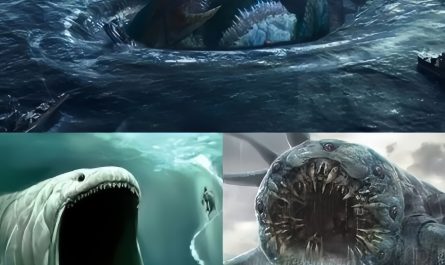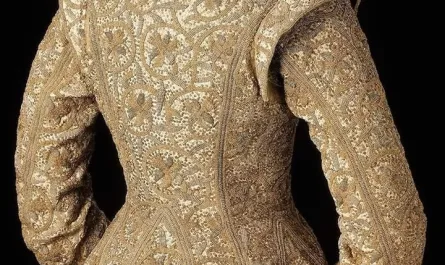When Alien hit theaters in 1979, it redefined sci-fi horror with its groundbreaking creature design: the Xenomorph. This biomechanical nightmare, born from the mind of Swiss surrealist artist H.R. Giger, became an icon of cinema, blending organic horror with mechanical precision. But one of Giger’s earliest visions for the creature—a transparent skull revealing a pulsating, brain-like structure—never made it to the screen. This blog post dives into the origins of this concept, why it was abandoned, and its lasting impact on the Alien franchise and pop culture.

H.R. Giger: The Architect of Nightmares
Hans Ruedi Giger was no ordinary artist. Known for his surreal, biomechanical art, Giger’s work fused flesh and machine in ways that were both beautiful and deeply unsettling. His 1976 book Necronomicon caught the attention of director Ridley Scott and screenwriter Dan O’Bannon, who were developing Alien. Giger’s painting Necronom IV, depicting a sleek, elongated creature with a glossy, eyeless head, became the foundation for the Xenomorph. His art didn’t just inspire the creature—it shaped the entire aesthetic of the film, from the derelict ship to the haunting landscapes of LV-426.
Giger was brought on board to design the Xenomorph, its life cycle (facehugger, chestburster, and adult), and key set pieces. His vision was to create something truly alien—not just a monster, but a being that defied natural biology. Among his early sketches was a bold idea: a Xenomorph with a transparent skull.
The Transparent Skull Concept
In Giger’s initial designs, the Xenomorph’s elongated head was envisioned as a translucent dome, exposing a throbbing, brain-like structure beneath. This concept amplified the creature’s otherworldly horror. The visible, pulsating innards would have suggested a living, thinking predator, while the transparency added a layer of vulnerability that contrasted with its lethal nature. It was a perfect embodiment of Giger’s biomechanical ethos: organic yet alien, fragile yet deadly.
The transparent skull wasn’t just a visual gimmick. It was meant to unsettle audiences by making the Xenomorph’s intentions unreadable. Without visible eyes, the creature already lacked a “face” to interpret, and the exposed brain-like structure would have made it even harder to predict its actions. Giger’s sketches, some of which appear in Giger’s Alien (a 1979 art book chronicling his work on the film), show a creature with a crystalline head, its inner workings glowing faintly under the harsh lights of the Nostromo.
Why the Transparent Skull Was Abandoned
While the concept was striking, it proved impractical for the film’s production. In the late 1970s, practical effects were the backbone of creature design. The Xenomorph was brought to life using a combination of costumes (worn by actor Bolaji Badejo), animatronics, and puppetry. Creating a transparent skull that looked convincing on screen posed several challenges:
-
Technical Limitations: Crafting a translucent head that could withstand filming was a nightmare. The material needed to be durable yet clear, capable of holding its shape during dynamic scenes (like the Xenomorph’s attack on Brett). Early tests with plastics and resins failed to achieve the desired effect without looking cheap or breaking under stress.
-
Lighting Issues: The transparent skull required precise lighting to reveal the brain-like structure without overexposing it. On a dimly lit set like the Nostromo, this was nearly impossible. The crew struggled to balance the eerie glow of the skull with the film’s moody, shadow-heavy cinematography.
-
Cost and Time Constraints: Alien was made on a modest budget of about $11 million. Building a functional, transparent Xenomorph head would have required significant resources and time—both in short supply. The production team, including effects artists Carlo Rambaldi and Roger Dicken, prioritized reliability over ambition.
Ultimately, Ridley Scott and the team opted for a simpler design: a sleek, opaque, elongated skull with a glossy black finish. This version was easier to construct and film, and it proved just as terrifying. The lack of visible eyes or facial features made the Xenomorph feel like a force of nature—unknowable, relentless, and utterly alien.
The Final Xenomorph Design
The Xenomorph we know today is a testament to practical design meeting artistic vision. The opaque skull, with its smooth, reflective surface and jagged teeth, became one of the most recognizable creatures in film history. The final design retained Giger’s biomechanical essence but leaned into a more insect-like aesthetic, with a carapace-like head that suggested both armor and organic decay. The creature’s movements, enhanced by Badejo’s lanky frame and the animatronic jaw, made it a physical presence that felt real and immediate.
While the transparent skull was scrapped, Giger’s influence remained undeniable. The Xenomorph’s design still carried his signature: the fusion of bone and metal, the phallic and vaginal imagery, and the sense of something ancient yet futuristic. The opaque head, while less ambitious, allowed the creature to feel like a shadow—always lurking, always unpredictable.
Echoes of the Transparent Skull in the Alien Franchise
Though the transparent skull never appeared in Alien, its spirit lived on in the franchise. Later films experimented with translucent elements, hinting at Giger’s original vision:
-
Alien: Resurrection (1997): The Newborn, a human-Xenomorph hybrid, had a semi-translucent head with visible bone structure. While not as refined as Giger’s concept, it echoed the idea of exposing the creature’s inner workings.
-
Prometheus (2012) and Alien: Covenant (2017): Ridley Scott’s prequels introduced creatures like the Trilobite and Neomorph, which had pale, almost translucent skin. These designs nodded to Giger’s love for organic horror, though they lacked the biomechanical precision of his work.
-
Concept Art and Merchandise: Giger’s transparent skull sketches have been featured in art books, documentaries, and collectibles. Fans can find them in Giger’s Alien or exhibitions of his work, where they remain a haunting “what could have been.”
The transparent skull also inspired fan art and modders in games like Alien: Isolation (2014), where some have recreated the concept in digital form. While these are unofficial, they show how Giger’s idea continues to captivate audiences.
The Legacy of Giger’s Vision
The transparent skull may not have made it into Alien, but its influence underscores Giger’s genius. His ability to push boundaries—both artistic and technical—forced filmmakers to think beyond conventional monster designs. The Xenomorph’s enduring appeal lies in its ability to feel alien in every sense: not just a creature from another world, but a being that defies our understanding of life itself.
Giger’s work on Alien earned him an Academy Award for Best Visual Effects (shared with the effects team), and his designs continue to inspire filmmakers, artists, and game developers. The transparent skull concept, though unrealized, remains a testament to his willingness to dream big, even when technology couldn’t keep up.
Conclusion
H.R. Giger’s transparent skull Xenomorph is a fascinating footnote in the history of Alien. It represents the collision of visionary art and the practical realities of filmmaking. While the final Xenomorph design became a cultural icon, the abandoned concept reminds us of the creative risks that shaped the franchise. For fans, it’s a glimpse into an alternate Alien—one where the creature’s brain pulsed visibly, adding another layer of terror to an already unforgettable monster.
If you’re curious to explore more, check out Giger’s Alien or documentaries like Memory: The Origins of Alien (2019), which delve into the design process. The transparent skull may never have stalked the halls of the Nostromo, but it lives on in the imaginations of fans and artists alike.





